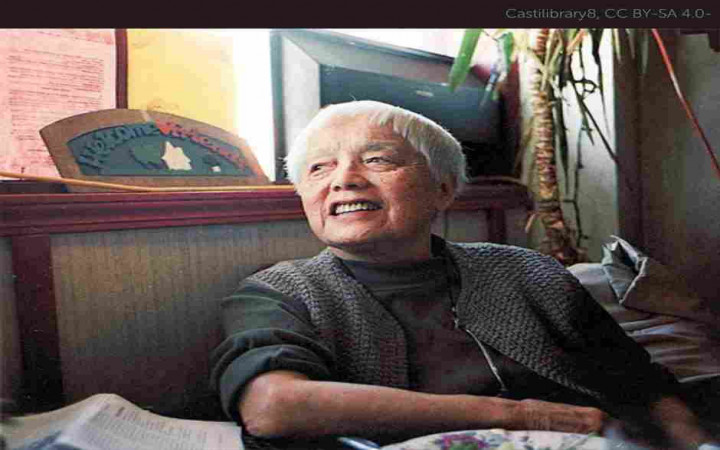Today’s Wonder of the Day was inspired by Julissa. Julissa Wonders, “Who was the first female activist?” Thanks for WONDERing with us, Julissa!
We learn in school about historic U.S. figures who fought for social and civil rights. Dr. Martin Luther King, Jr., Angela Davis, Malcolm X, and Rosa Parks were all famous for their work. Join the Wonder team today as we study another important person and her activism—Grace Lee Boggs.
Grace Lee was a first generation Asian American. She was born June 27, 1915, in Rhode Island. Her parents were Chinese immigrants. She spent her childhood in Queens, New York. As a female and a minority, she experienced discrimination from an early age. This treatment motivated her to work for equal rights for everyone. She also credited her parents with sparking her activism.
Her mother never learned to read or write. A family member sold her into work, but she ran away. She left China while pregnant and gave birth in a ship’s hold. Grace Lee’s father had a successful restaurant. He provided opportunities and a comfortable life for his family.
Even though she earned a PhD in philosophy from Bryn Mawr College in 1940, Lee could not find work in New York. Potential employers turned her away because of her Asian identity and her gender. Lee moved to Chicago. There she got a low-paying job in a philosophy library. Her first apartment was free and rat-infested. When she saw protests over housing conditions, she joined the movement. Lee said this was her first time being in contact with the Black community.
Lee returned to New York. She became an activist for the rights of Black people, women, young people, and workers. She grew more interested in politics and the poor treatment of people of color.
In the early 1950s, Lee moved to Detroit. Detroit was actively involved in the labor movement. It was the center of the automobile industry, which had thousands of workers. Most of the workers were Black people who had migrated from the South. She joined the staff of a leftist paper, Correspondence. She used a pen name, Ria Stone, to protect her identity.
By 1953, Lee met and married James Boggs. Boggs was a Black man who was a member of the United Automobile Workers (UAW) union. He was active in protecting striking workers. Grace Lee and James Boggs’ marriage created a powerful activist front.
Grace Lee Boggs worked during the 1960s for the Black Power movement. She organized marches in Detroit, where Malcolm X and Dr. Martin Luther King Jr. gave important speeches. Grace Lee and James Boggs advocated for workers to self-organize. The pair wrote books and articles together and separately. She encouraged personal change as the basis of broader revolution.
Before James Boggs passed away in 1993, he and Grace Lee started a community movement called Detroit Summer. They invited all ages and cultures to join together to improve Detroit. Members planted community gardens in vacant lots. They renovated houses. Artists painted murals to improve the look of rundown areas.
As a widow, Grace Lee Boggs became more focused on Detroit activism. She worked to identify ways people in the city could survive and even thrive. The home she shared with her husband had always drawn revolutionary thinkers. They founded the James and Grace Lee Boggs Center to Nurture Community Leadership in 1995. The Boggs house is its headquarters.
Grace Lee Boggs passed away on October 5, 2015. She remained busy as an activist well into her 90s. Boggs helped launch a charter school that purposely centers curriculum on Detroit’s history. She wrote weekly for the Michigan Citizen newspaper. The column advocated for ongoing reforms in the city. She and her life were the subject of a documentary.
Grace Lee Boggs and her work for women, Black people, Asian Americans, the elderly, and other underserved groups still inspires many people. Would you like to be an activist like Boggs? How would you like to follow in her footsteps?
Standards: CCRA.R.1, CCRA.R.2, CCRA.R.3, CCRA.R.8, CCRA.R.10, CCRA.L.3, CCRA.L.4, CCRA.L.5, CCRA.L.6, CCRA.W.3, NCAS.CR.1, SEL.3




